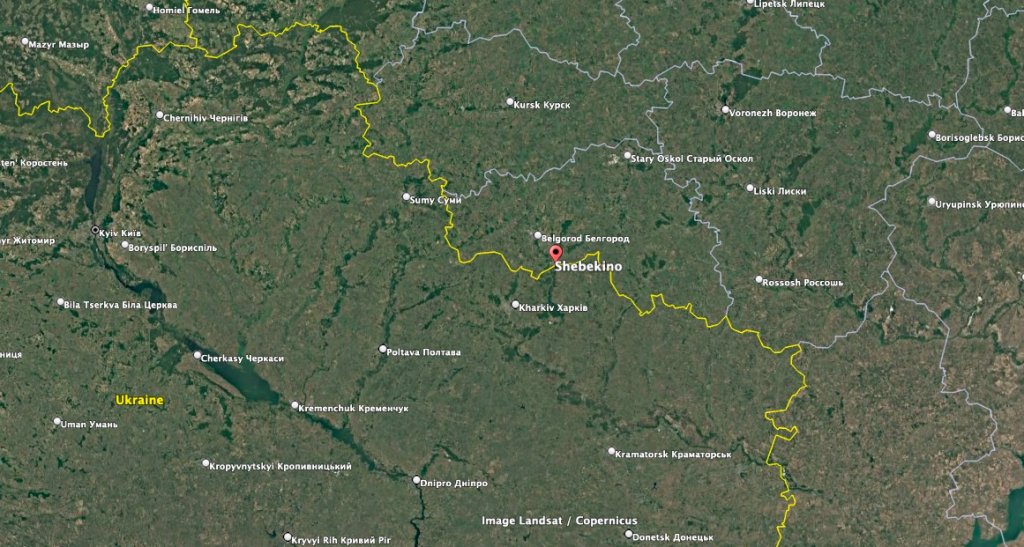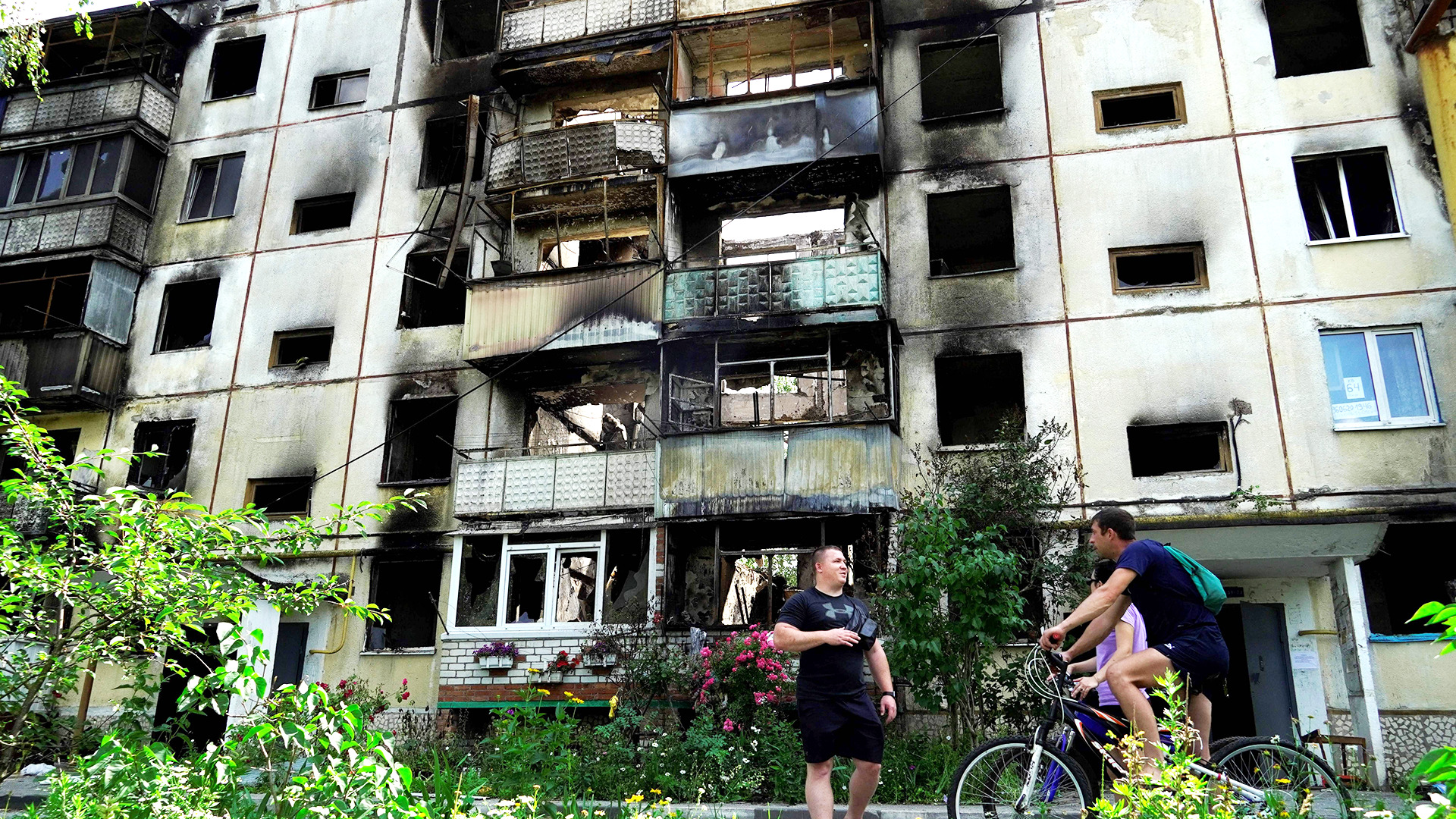Faced with constant attacks by Ukrainian drones and artillery, officials in the Russian border town of Shebekino have placed anti-drone netting on dozens of buildings for protection. The move comes as Ukrainian forces continue to maintain a small salient in the region after launching an incursion there two weeks ago.
Images taken by local photographer Olga Klyuchkareva emerged on social media Thursday showing several high-rise buildings covered by the netting. The nets in the images are attached to the tops of a block of five-story apartment buildings and drape down outward toward the street.
“In the city, about 35 multi-story buildings are already covered with such networks,” the Russian Military Chronicle Telegram channel reported. “Shebekino is under constant enemy attacks. Yesterday, UAV strikes damaged an apartment in an apartment building, a car, and a residential building, Governor Vyacheslav Gladkov reported in the morning.”
The netting seen today in Shebekino is the result of a program Gladkov initiated last November.
“‘As part of the experiment, 10 residential buildings will be covered with such nets,’ said Gladkov,” the independent Russian Astra news outlet reported at the time. “The material chosen is non-standard, suitable for these purposes. One of the contractors undertakes to cover 10 buildings with such nets. We will see how it performs, and then we will make a decision.”
Though officials were evaluating how well the netting worked, that experiment was designed to be temporary, Gladkov explained at the time.
“Such a measure would not be durable, since in winter the netting gets clogged with snow and can break under its weight,” he said. “Their lifespan will be three to four days, so it is not profitable in terms of costs or implementation.”
These building nets are the latest iteration of a defensive measure both sides have adopted to help protect against drones by either causing them to explode at a distance from the target or get caught up in the webbing. They have appeared in static locations like oil refineries in Kapotnya and in Novoshakhtinsk, and more recently, as tunnels on roadways.
“Installing nets made of durable synthetic material allows for the interception of small fragments and the slowing down of the fall of larger debris, minimizing the likelihood of casualties and destruction,” the Russian Dzen media outlet reported.
This measure is far from infallible of course. First-person view (FPV) drones with the ability to command detonate could punch holes in these nets, allowing other FPVs to enter. They would offer no protection against artillery shells or airstrikes.
All this comes as Ukrainian troops have established a 13km (about eight miles) thrust into the Belgorod region, a retired high-ranking Ukrainian officer told The War Zone.

“Aviation assets are carrying out combat sorties to cut off logistic lines of supplies, blowing up bridges and trying to reduce the operational tempo of Russian troops in counteroffensive actions,” said the official, speaking on condition of anonymity to discuss operational details. “On the other hand, making it more difficult for Russian troops to withdraw from the area of operation.”
The strategic objective of the Ukrainian Belgorod operation “is to create one more bridgehead as a buffer zone to our border and create more favorable conditions before the widely expected spring-summer Russian counteroffensive,” the retired officer posited.
The Russian Defense Ministry (MoD) acknowledges the incursion but said its forces are inflicting heavy casualties on Ukrainian forces.
“In the Belgorod direction, units of the Sever Group of Forces hit manpower and hardware of two mechanized brigades, one motorized infantry brigade, two assault regiments of the Armed Forces of Ukraine, and two territorial defense brigades close to Miropolskoye, Prokhody, and Petrushevka.”
That Russia is using nets to protect civilian buildings is a stark reminder of how the war has hit home for this city. A large number of the 40,000 residents who lived there before the all-out war began have been evacuated because of Ukrainian bombardment. Whether this defensive measure can help protect some of those who stayed remains to be seen.
Contact the author: howard@thewarzone.com
